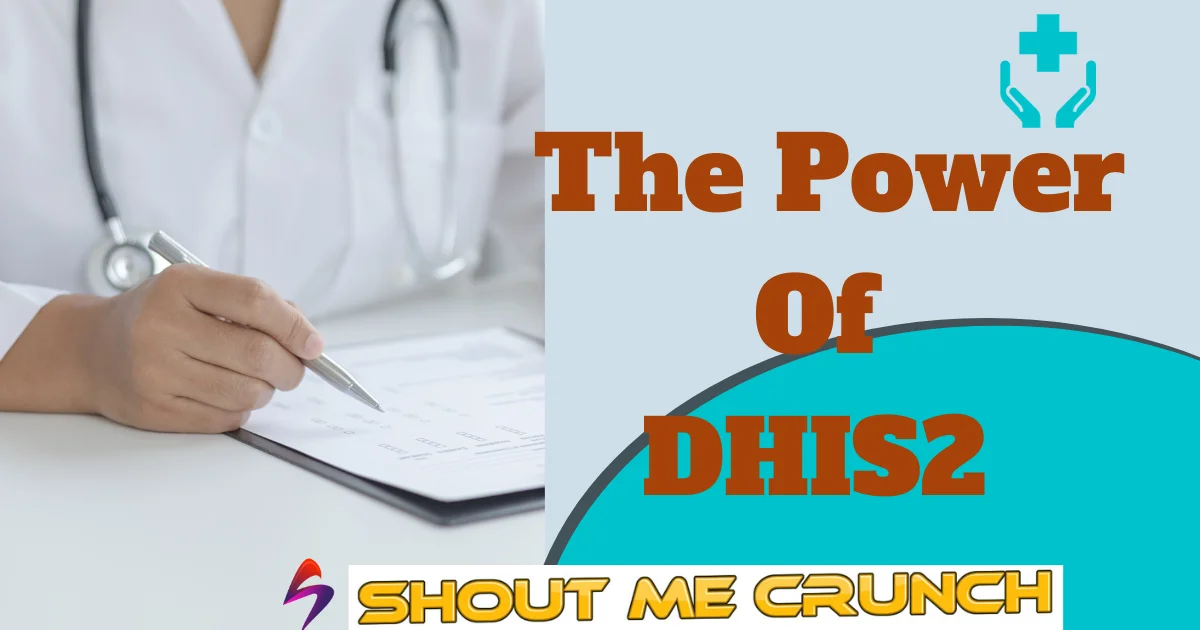In today’s world, where data-driven decisions drive growth, the healthcare industry is undergoing a tremendous transition, and DHIS2 – the District Health Information Software 2 – is at the center of this evolution. It’s known as DHIS2 and more than just a software platform; it’s a ray of hope for health systems looking to improve the quality of their services and outcomes. In this conversation, we’ll take you on a trip to discover the critical role that DHIS2 plays in the healthcare scene.
DHIS2, which stands for District Health Information Software 2, is a dynamic and open-source platform that aims to transform health information administration. It is more than just software; it is a disruptive force that paves the way for safe data gathering, storage, insightful analysis, and practical use in healthcare. The DHIS2 ripple effect is far-reaching, affecting healthcare personnel and services in ways that cannot be overstated.
What is DHIS2?
DHIS2, for District Health Information Software 2, is a platform that improves health information administration. Health data is a valuable resource for healthcare practitioners that may be collected, safeguarded, analyzed, and implemented with the help of DHIS2. This open-source technology is widely recognized and praised for its critical role in healthcare.
DHIS2 assists users in overcoming the challenges of efficiently managing health information. It offers a single platform for handling structured and meaningful health data, allowing healthcare practitioners to make evidence-based decisions. DHIS2 provides customers with the tools they need to improve healthcare services, regardless of their location or degree of operation.
What is The Role of DHIS2?
DHIS2 is software that aids health improvement by supplying healthcare systems with trustworthy and timely data. It enables health administrators and politicians to make sound decisions based on facts. They can, for example, more efficiently allocate resources, monitor disease outbreaks, and optimize service delivery.

The benefits of DHIS2 that aid health workers are its user-friendly interface, scalability, and adaptability. They have access to pertinent information at all times and all levels, from facility to national. This gives them the ability to improve their performance and impact. As a result, DHIS2 is a potent instrument for improving healthcare quality and outcomes.
Ensure Facility
To ensure DHIS2’s success, it is critical to solve the logistical problems that may impede its deployment, particularly in metropolitan areas. One of the most challenging difficulties is providing continuous internet access to healthcare institutions, which is required for real-time data entry and retrieval. Although urban facilities may have more vital connectivity than rural facilities, backup options must be planned for during power outages or network breakdowns.
Another problem is motivating healthcare workers to use DHIS2 to improve their work performance and care quality. Health professionals are the foundation of the healthcare system, and their participation in data entry and utilization is critical. To do this, health professionals must be adequately compensated and trained and get feedback and credit for their efforts. As a result, health staff can accept DHIS2 as a part of their routine rather than an added load.
Data Quality
The DHIS2 platform collects and manages health data. The quality of data is critical for any healthcare system. Decisions based on incorrect, inadequate, or inconsistent data may have unintended repercussions and provide inferior results. This is the inverse of the data-driven healthcare strategy. That is why DHIS2 requires routine data quality assessment (DQA).

DQA is a process that comprises evaluating data input techniques, examining data sources, and finding and rectifying any errors or discrepancies. DHIS2 provides tools and procedures to assist users in performing DQA effectively and efficiently. Data quality is an ongoing endeavor to assure the trustworthiness and validity of health data, not a one-time event.
Data Optimizing
DHIS2 is a system that collects and optimizes health data for better healthcare results. It gives healthcare workers access to extensive and trustworthy data on various health indicators and the ability to analyze and visualize the data in relevant ways. As a result, DHIS2 assists healthcare personnel in making educated, evidence-based decisions that improve the quality of care they deliver to their patients.
DHIS2 also enables healthcare practitioners to better detect and treat health concerns by monitoring and evaluating the impact of their activities. It gives them the tools they need to create reports and dashboards that deliver data clearly and promptly. DHIS2 is an effective mechanism for converting health data into health action.
Budget for Health Improvement
DHIS2 is a technology that assists hospital administrators in making data-driven resource allocation decisions. Healthcare resource distribution is a sensitive task that necessitates careful planning and budgeting. DHIS2 provides statistics on disease prevalence in various areas, which aids in prioritizing the most pressing requirements. Healthcare administrators can use DHIS2 data to guarantee that each healthcare institution has enough staff, medications, and equipment to serve the population. They may refrain from squandering resources and maximize the impact of every dollar spent on health improvement in this manner.
Regular Review Workshop
Conducting frequent review workshops with data producers and users is one of the most essential actions for ensuring the quality and usability of DHIS2 data. These workshops allow participants to verify and rectify data and discuss any concerns or challenges connected to data quality and management.
By organizing monthly review workshops, healthcare facilities that use DHIS2 can connect and collaborate, fostering a feeling of community and data accountability. The seminars also allow participants to discuss best practices and comments on enhancing their data collection and analysis procedures.
As a result, monthly review workshops are critical for maintaining and improving the accuracy and usefulness of DHIS2 data, which supports health improvement programs.
Strengthening the Workforce
DHIS2 is a software platform that helps with health data management and analysis.
To effectively implement DHIS2, health systems require experienced Health Management Information System (HMIS) officials at several levels. These officers are in charge of gathering, validating, and reporting health data via DHIS2.
For HMIS officers, the recommended staffing structure is as follows:
- One officer for each of the 64 districts
- Eight officers for each of the eight divisions
- Five officers for the national level
This guarantees that the health system has appropriate capacity and coordination for data quality and usage. To be ready for their new positions, these officers must undergo a rigorous training program that includes the technical and functional components of DHIS2 and best practices and standards for health data administration.
Collaboration for Success
Working together is an essential component of the achievement of DHIS2. Effective data management needs interaction sessions across various healthcare programs and the WHO SIMO model, Surveillance and Immunization Medical Officer (SIMO). These components assist healthcare programs in harmonizing and reducing reporting variables and datasets, resulting in more efficient and valuable data collecting.

Another critical part of collaboration is creating technical data interchange and interoperability capacity, allowing seamless system integration. Data consistency and quality are also essential for effective data management. This entails developing and adhering to clear operational definitions of variables, data collecting, and reporting techniques. This is especially crucial when data gathering and analysis involves numerous programs and agencies.
Conclusion
The DHIS2 platform is a comprehensive platform that assists healthcare systems in improving health outcomes. It provides the required tools and information to ensure data quality, optimize resource allocation, and strengthen the healthcare staff. DHIS2 assists healthcare systems in achieving successful health improvement in their respective contexts by enabling data-driven decision-making and evidence-based action.


